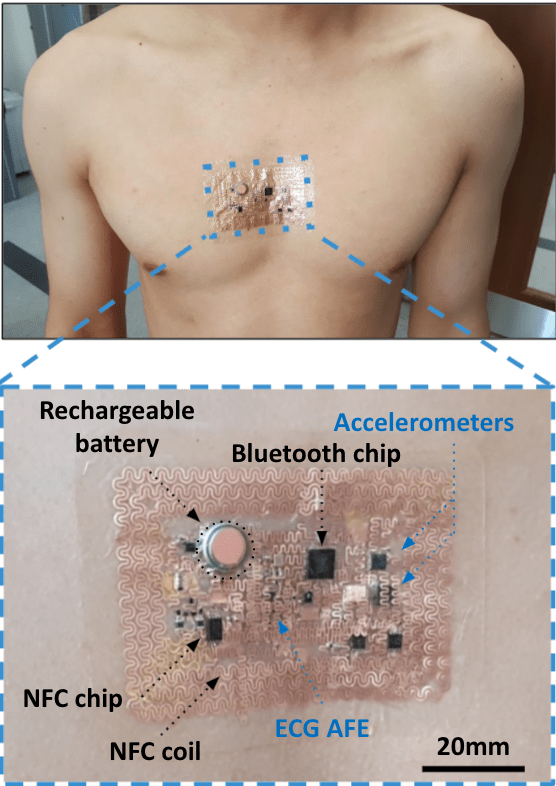UT researchers develop “e-tattoo” to monitor pneumonia symptoms
October 25, 2021
Editor’s Note: This article first appeared as part of the October 8th flipbook.
Doctors may be able to monitor patients’ pneumonia symptoms from their homes for the first time as UT researchers work to complete a wearable prototype device that tracks the disease in the coming year.
The National Science Foundation awarded $1.5 million to UT researchers to work on the device researchers are calling an “e-tattoo” to better monitor a patient’s recovery and prevent deaths from pneumonia. Patients will wear the device on their chests at home while hospital personnel track their breathing rate, oxygen levels and heart rate, said associate professor Nanshu Lu, who is leading the study.
Lu said current pneumonia detection methods are expensive and are only available in hospitals. Parag Jain, a pediatric critical care physician at Texas Children’s Hospital, said pneumonia patients are currently overflowing his emergency room.
“(The device) has potential for being a game-changer in how we care about our patients, essentially,” Jain said. “Where we will be able to keep more families safe at home. And maybe eventually decrease some healthcare dollars by minimizing admissions.”
Lu said the e-tattoo contains a Bluetooth chip and a rechargeable battery protected by multiple layers, which allows the device to continue monitoring patients without getting wet or harmed.
In 2019, nearly 44,000 people died due to pneumonia and according to the Centers for Disease Control and Prevention, pneumonia complicates COVID-19. Furthermore, Lu said pneumonia is hard to track.
“Pneumonia is very tricky to track, especially out of a hospital because (pneumonia) can change abruptly,” Lu said. “Sometimes the rescue is not timely enough and pneumonia suddenly worsens and can take over their lives even before the rescue team could arrive.
Jain said he will lead the clinical trial for the device when researchers complete the prototype. Jain said his team will test the device on 20 pneumonia patients aged 13 to 18-years-old to collect data and see if it works.
Jain said it usually takes a week for patients to recover from pneumonia, which is how long the battery of the e-tattoo will last.
“It has potential for being a game-changer in how we care about our patients essentially,” Jain said. “Where we will be able to keep more families safe at home. And maybe eventually decrease some health care dollars by minimizing admissions.”
Hongyu Miao, associate professor of statistics and data science at University of Texas Health Science Center, said he will be analyzing different data for the study. Miao said he will analyze past data of pneumonia patients, such as heart rate and blood pressure to train the e-tattoo’s algorithm. He will also examine data from the e-tattoo during the clinical trials to verify whether it works.
Jain said he hopes the device will be able to monitor more diseases than just pneumonia in the future.
“Honestly, we’re just scratching the surface in terms of remote monitoring. … The potential of this is enormous,” Jain said. “Once we have the data (on) how to monitor the heart rate (and) respiratory rate, then we can definitely bring it onto other conditions.”



